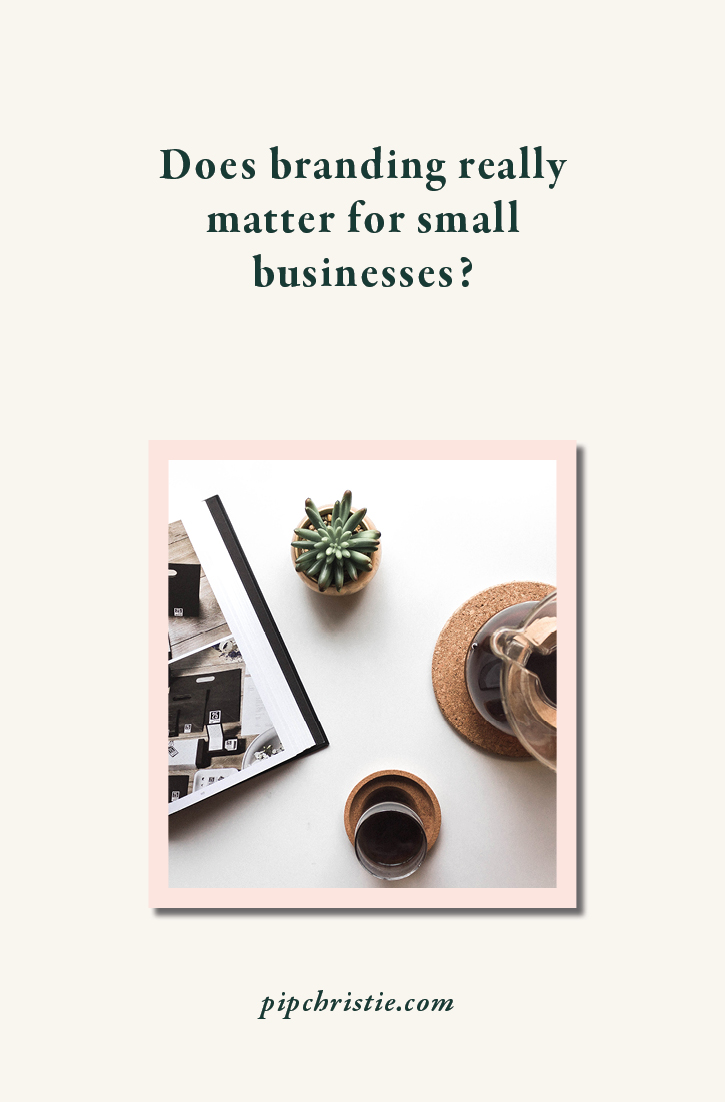Does branding really matter for small businesses?
What do you think of when someone says the word branding to you? Is it a large corporate brand like Nike, Google or Facebook? Or is it a small, local, ethical business based just down the road from you? The fact is, no matter the size of your business, branding matters.

Whether you’re a multinational corporation or just starting out – your brand is far more important than you think. There’s a common misconception for many small businesses that branding isn’t a priority. It’s easy to think that if you don’t have a large budget to invest into a project such as branding, that it doesn’t play an important role in your business. But that’s simply not true. Small businesses need good brands, you just might go about it in a slightly different way.
So, what goes into building a strong brand? And why is it so important for small businesses?
Identifying Your Audience
For starters, you need to have your identity sorted before you can start selling effectively. You need to know:
- Who your business is
- Who your audience is
- What resonates with them
A fundamental part of the branding process involves looking at your target customer. Whether you’re working through this in-house or contracting out with the help of an agency or freelancer, you’ll need to ask yourself “who are we talking to?”. Consider, who is your target customer group? What age are they? What gender do they tend to identify with? What are their challenges, what are they looking to achieve? Where do they hang out? What other content do they consume?
It’s so key to be sure of this information to, quite simply, know who you’re talking to. Not only do you want to know whether your brand is going to appeal to the right people, this process will help you establish what sort of messaging is going to be most effective for your business.
You’ll notice that earlier I mentioned aiming to sell ‘effectively’. I put that in there for a very important reason. You may well still sell products, services, experiences etc. without an identified audience but it’s unlikely that you’ll be doing it effectively. It’ll likely be a much slower process than if you had gone about establishing your audience beforehand.
The Key Ingredients
Once you’ve gone through the identity process it’s time to start designing your visual brand. But what does that consist of?
The key ingredients of good simple branding include:
- A primary logo
- An alternate logo, often used for your social media profile images
- Typography i.e. your brand fonts
- Brand colours
These can then be levelled up with graphics and so forth but nail these four simple ingredients and you’ll have a strong brand to showcase your small business with.
Becoming Memorable
By creating a strong visual brand for your business you are actually building a visual identity. If you focus on achieving consistency across the board – the correct logos used in all your marketing materials, the right fonts and colours used in your social media graphics – you will start to seep into your audience’s subconscious. In short, you will start to become memorable.
Imagine if I told you that every time you met someone you’d like to become your customer you were going to explain your business to them in a different way. That’d be pretty ludicrous right? They’d never remember what you do and you’d come across as haphazard and unprofessional.
The same goes for your visual branding. Nailing that visual consistency will give you that professional appearance that we’re all striving to achieve.
Soon enough, your ideal clients will start recognising you each time you pop up in their Instagram feeds or when your newsletter slides into their inbox. You’ll become remembered as a trusted resource. You’ll become a business that they can rely on.
This is just as important whether you’re a small, large or solo business. In fact, I believe that is could well be even more important for small businesses and solopreneurs. Unlike large companies, we typically don’t have the luxury of thousands of pounds to invest in our marketing and advertising campaigns. Instead, we must leverage what we have and leverage it wisely.
Branding doesn’t have to cost the earth. (With a little creativity you could even build a brand for free thanks to intuitive design sites such as Canva.) By making the effort to invest our time into our businesses through building a strong brand, we too have the power to become instantly recognisable as a small business in our own community – the same way that the Nikes and Googles do on a global stage.
Have you built a visual brand for your business?
Write your website copy like a pro copywriter (without the pro price tag)
Introducing... the about page roadmap.
You’ll get access to the same copywriting framework I use with my small business clients. So you can have an about page that feels 100% you.


